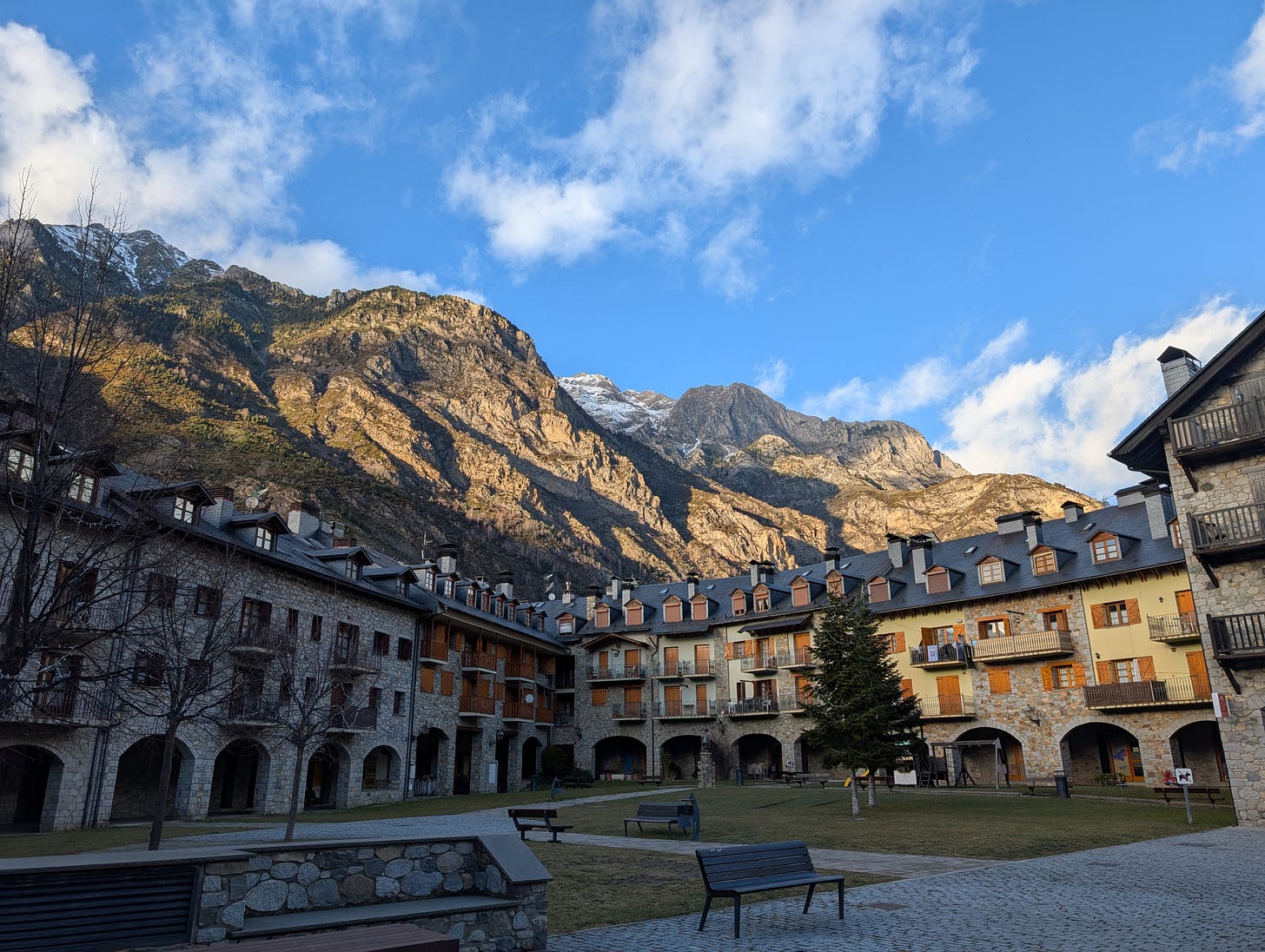The Spanish Mountain Town That Stole My Heart
In the high Pyrenees, Benasque delivers natural beauty, alpine charm, and off-the-beaten-path living.
Imagine a landscape that begins in Spain’s dry northeastern deserts, rolls into hilly wine country, and stretches up to soaring mountain peaks. From wine sipping to alpine treks, a mountain playground awaits just miles from the French border—and you’ve probably never considered it.
I could almost hear “Maria” yodeling from the mountainside, surrounded by green valleys and snowcapped peaks. But this isn’t Austria or the Alps—it’s the Spanish Pyrenees.
This under-the-radar region is a year-round haven for active lifestyles and peaceful retreats. In summer, it fills with picnicking Spaniards, bikers, hikers, and campervans. Come winter, snow blankets stone-built villages, and the mountains become a playground for skiers and snow lovers.
Retirees and expats from mountain states like Colorado or Montana will find the Pyrenees both familiar and refreshing—perfect for a seasonal escape or even a new home base.
At the edge of the range, landscapes shift dramatically. Days are spent exploring whitewater gorges in Huesca, sampling wines in Somontano, or wandering the cobbled streets of ancient Aínsa and Alquézar.
One of the most charming spots to settle is Benasque, a picturesque mountain town known for its sturdy stone condos and romantic alpine feel. Sitting at 1,140 meters (3,740 feet) and just below the ski resort town of Cerler, Benasque is the unofficial base camp for winter sports in the region.
Cerler, one of the highest towns in the Spanish Pyrenees, rises to 1,500 meters (4,920 feet) and offers a lively resort with rope tows for kids, ski schools for adults, and snow-covered slopes leading straight into cozy food halls. If I hadn’t known better, I’d have thought we were in Colorado.
Benasque is surprisingly well-equipped. Outdoor gear shops and well-stocked supermarkets serve both locals and tourists. The town also has a school, plenty of hotels, and a variety of fireside restaurants perfect for après-ski evenings. Cerler, perched above, offers quieter, ski-in lodging and rustic dining.
What surprised me most about Benasque was its youthful, modern vibe. On the surface, it looks like a sleepy cobbled town. But dig deeper and you’ll find a hip side. One pub was decked out in furs and tree stumps, serving house-made vermouth—it felt straight out of Game of Thrones. Meals were Michelin-inspired creations, a delightful surprise even for this self-proclaimed foodie.
Dining here mixes tradition with innovation. We sampled flame-cooked meats, tapas reimagined with local produce, and fresh takes on tuna tartare. Yet every building still holds a roaring fire, and somewhere behind the scenes, an abuela is cooking with love. This balance of modern and traditional seems to be Benasque’s signature.
The surrounding valley is seeing new life as well. Condos—designed in traditional style with stone walls and timbered ceilings—are popping up, clearly aimed at young families. Prices start in the mid-$200,000s. Whether for Christmas with the grandkids or summer barbecues with neighbors, these homes offer charm and convenience.
Benasque has a public health center and a veterinary clinic. The nearest major hospital is under two hours away.
If being deep in the mountains isn’t your thing, consider larger nearby towns like Huesca, a modern city with a university, Michelin-starred restaurants, and plenty of outdoor adventures. It’s two hours away and well-connected.
Even closer is Barbastro, about 90 minutes south of Benasque, and the starting point of the Somontano wine route. The route meanders past medieval villages like Alquézar, where fortress walls, fine dining, and charming streets await.
Wine lovers will find much to enjoy; this region produces refreshingly dry takes on typically sweeter varietals like Riesling and Gewürztraminer.
Between Barbastro and Benasque, expect old-world villages where the local bar is still the town’s social center. You’ll also pass through natural wonders like the Congosto de Ventamillo, a dramatic gorge carved between towering cliffs.
Driving is essential here. Public transport is limited, with only a few bus connections from Zaragoza, the historic capital of Aragon, about three hours away. Huesca and Zaragoza also host the nearest regional airports, two and three hours away, respectively.
Whether you come for summer hikes or winter skiing, the Pyrenees offer seasonal living with soul. On our last visit, we saw clear signs of growth—charming new stone condos, modern conveniences, and vibrant local life.
For those considering a seasonal home, a retirement haven, or simply a new adventure, Benasque offers the perfect blend of mountain beauty and modern convenience. For me, discovering the Pyrenees wasn’t just about skiing or scenery; it was about finding a place that feels like a hidden home. At Christmastime, it was nothing short of a winter wonderland.
Editor’s Note: If Maria’s love for Benasque has sparked your curiosity about Spain, you’ll enjoy exploring more of her stories. In her piece on part-time living in Zaragoza, she shares how her family balances life between the U.S. and Spain, with slow days, local markets, and a true sense of belonging. And if you’re considering your own move, her guide to the 11 best places to live in northern Spain highlights charming towns and regions, from wine country to coastal escapes, that could be your perfect overseas base.






This sounds like an absolute dream! Adding Benasque to my must-visit list!